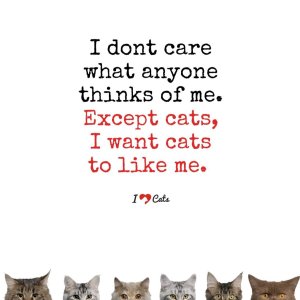Cats are known for their playful nature and unique behaviors. Whether it's chasing after a piece of string or pouncing on a toy mouse, these activities are essential for their physical and mental well-being. Understanding your cat's playful behavior can help strengthen your bond with them and improve their quality of life.

Why do cats play?
Play is a natural behavior for cats. It is a way for them to exercise, release energy, and practice hunting skills. Playtime is also an opportunity for cats to socialize with humans and other cats. It's not uncommon for cats to engage in solitary play, but they also enjoy interactive play with their owners.
Types of play
There are several types of play that cats engage in, including solitary play, interactive play, and predatory play.
Solitary play involves a cat playing by themselves, usually with small toys or objects that they can chase, bat, or pounce on. This type of play is important for a cat's mental stimulation and can help prevent boredom and destructive behavior.
Interactive play involves the cat playing with their owner or another cat. This type of play can help strengthen the bond between the cat and their owner and can also help cats develop their social skills.
Predatory play is when a cat displays hunting behavior, such as stalking, chasing, and pouncing. This type of play is essential for a cat's physical and mental health, as it allows them to practice their hunting skills and release pent-up energy.
Common play behaviors
Cats have several play behaviors that are unique to them. These behaviors can include stalking, chasing, pouncing, and batting at objects. They may also engage in play-fighting with other cats or their owners, which is a way for them to practice their hunting skills and build social bonds.
Understanding your cat's body language during playtime is also essential. A cat's tail can provide valuable information about their mood and intentions. If a cat's tail is held high and puffed up, they may be feeling playful and excited. If their tail is twitching or swishing rapidly, they may be feeling agitated or irritated.
Tips for encouraging play
To encourage playtime with your cat, provide them with toys that are appropriate for their age and size. Toys that mimic prey, such as feather wands or toy mice, are especially popular with cats. You can also create DIY toys with items such as paper bags, cardboard boxes, or empty toilet paper rolls.
Interactive playtime with your cat can be beneficial for both you and your cat. It can help strengthen your bond and provide them with the mental and physical stimulation they need. It's important to remember that cats have different play preferences, so it may take some trial and error to find the toys and playtime that they enjoy the most.
In conclusion, understanding your cat's playful behavior is an important aspect of being a cat owner. By providing them with appropriate toys and engaging in interactive playtime, you can help improve their physical and mental health while strengthening your bond with them. So, let the feline frenzy begin!

Why do cats play?
Play is a natural behavior for cats. It is a way for them to exercise, release energy, and practice hunting skills. Playtime is also an opportunity for cats to socialize with humans and other cats. It's not uncommon for cats to engage in solitary play, but they also enjoy interactive play with their owners.
Types of play
There are several types of play that cats engage in, including solitary play, interactive play, and predatory play.
Solitary play involves a cat playing by themselves, usually with small toys or objects that they can chase, bat, or pounce on. This type of play is important for a cat's mental stimulation and can help prevent boredom and destructive behavior.
Interactive play involves the cat playing with their owner or another cat. This type of play can help strengthen the bond between the cat and their owner and can also help cats develop their social skills.
Predatory play is when a cat displays hunting behavior, such as stalking, chasing, and pouncing. This type of play is essential for a cat's physical and mental health, as it allows them to practice their hunting skills and release pent-up energy.
Common play behaviors
Cats have several play behaviors that are unique to them. These behaviors can include stalking, chasing, pouncing, and batting at objects. They may also engage in play-fighting with other cats or their owners, which is a way for them to practice their hunting skills and build social bonds.
Understanding your cat's body language during playtime is also essential. A cat's tail can provide valuable information about their mood and intentions. If a cat's tail is held high and puffed up, they may be feeling playful and excited. If their tail is twitching or swishing rapidly, they may be feeling agitated or irritated.
Tips for encouraging play
To encourage playtime with your cat, provide them with toys that are appropriate for their age and size. Toys that mimic prey, such as feather wands or toy mice, are especially popular with cats. You can also create DIY toys with items such as paper bags, cardboard boxes, or empty toilet paper rolls.
Interactive playtime with your cat can be beneficial for both you and your cat. It can help strengthen your bond and provide them with the mental and physical stimulation they need. It's important to remember that cats have different play preferences, so it may take some trial and error to find the toys and playtime that they enjoy the most.
In conclusion, understanding your cat's playful behavior is an important aspect of being a cat owner. By providing them with appropriate toys and engaging in interactive playtime, you can help improve their physical and mental health while strengthening your bond with them. So, let the feline frenzy begin!
